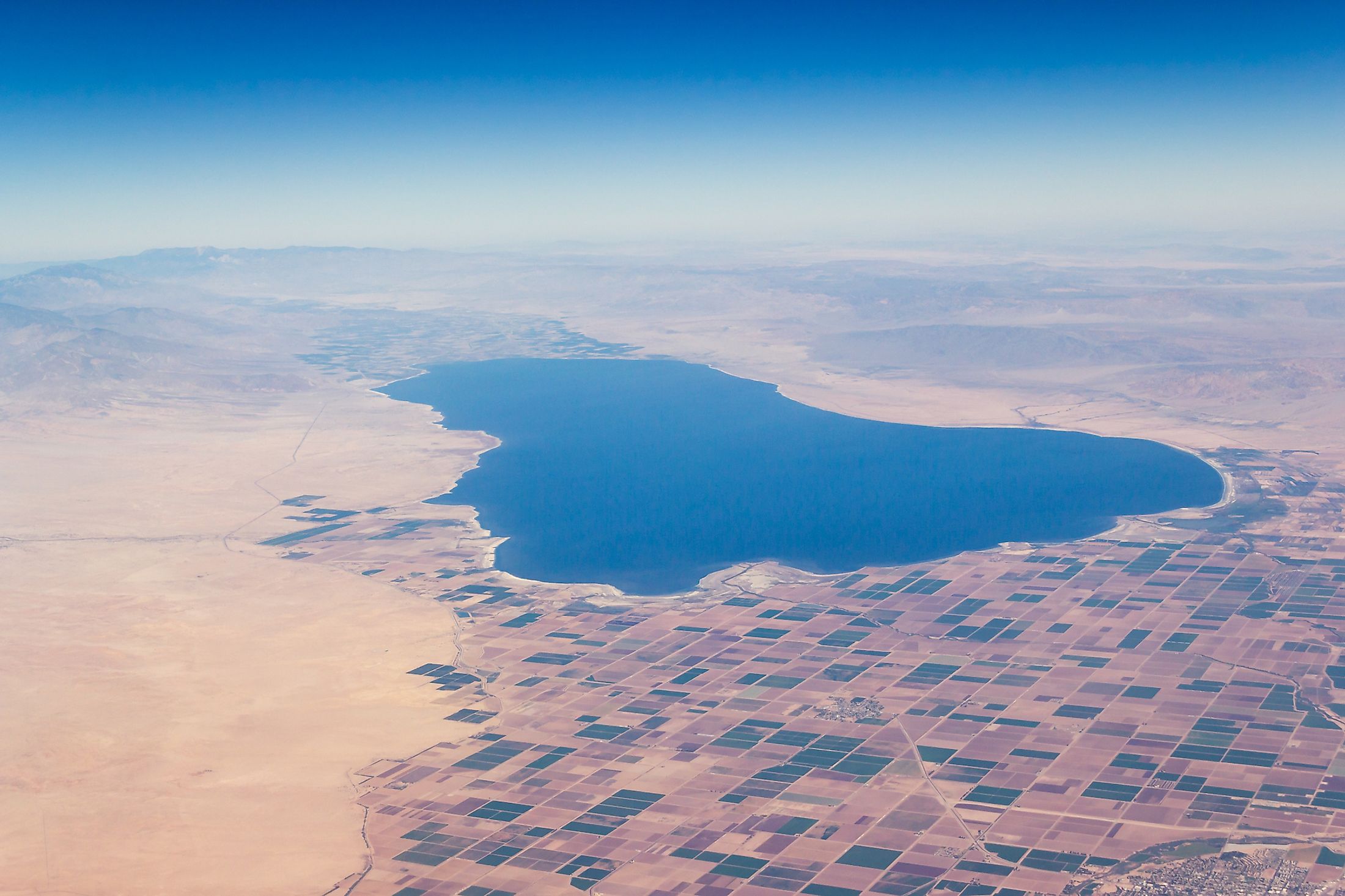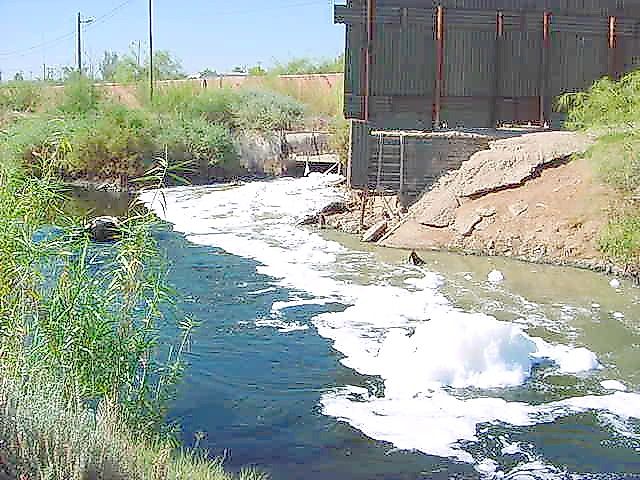
New River (Mexico–United States)
New River is a river in North America that flows north from Cerro Prieto, Mexico, into the Salton Sea in Imperial County, California, United States. The current river channel was formed in 1905 when the Colorado River and heavy rainfall flooded several dikes in the Salton Sink. New River is one of North America’s most polluted waterways, causing environmental and health problems. The river is also a source of conflict between Mexico and the US because of the strict environmental protection laws imposed by the United States. The river’s flow is mostly industrial wastewater, municipal discharge, and agricultural runoff.
The New River is one of the many rivers and streams in North America that empty into the Salton Sea. The river is 125 kilometers long from its source in Cerro Prieto, Mexico, to its mouth in the Salton Sea in the Imperial County in southern California. It flows through Mexicali City (Mexico) and Calexico (USA) on its way to the Salton Sea, where it discharges 18 cubic meters of water per second. The New River channel and the Alamo River channel were created by the 1905-1907 flooding that formed the Salton Sea, thus the name “New River. The New River watershed is part of the Salton Sea basin, a transboundary basin that includes Mexico’s Mexicali Valley and the US Imperial and Coachella Valleys.
Course Of The New River
The headwaters of the New River are located in the Mexicali Valley, approximately 24 kilometers south of Mexicali City. The river begins its flow from a volcanogenic lake located near Cerro Prieto and flows northwards and almost parallel to the Alamo River, which also originates in the Mexicali Valley. It flows for approximately 24 kilometers in Baja California, Mexico, before crossing the international boundary into the United States. The mean flow rate at the border is 5.7 cubic meters per second. Once in California, the river flows for about 106 kilometers, mainly through Calexico City in Imperial County, on its way to the Salton Sea. The New River flows into the inland sea near the southwestern tip at a rate of 18 cubic meters per second. The high flow rate is caused by agricultural runoff that flows into the river.
Pollution Level In The New River

The New River is the US’ most polluted river because of the toxic discharge and waste material it collects on the way to the Salton Sea. Although the river's pollution history is unclear, the river has been a pollution problem since the 1940s because of the offensive odor and high fecal coliform bacteria concentration at the border. The river runoff contains industrial wastewater, municipal discharge, and agricultural runoff from the nearby farms, industries, and settlements. The high population, especially in Mexicali, is also responsible for the increased river pollution. The city’s population increased from 6,200 in 1920 to over 100,000 in 1975. Since it had an inadequate sewer system, most of the waste material was released into the New River.
The river contains over 100 contaminants, including heavy metals such as arsenic, selenium, mercury, and uranium. Other contaminants include pesticides and PCBs. New River is a breeding ground for several pathogens responsible for diseases like cholera, typhoid, TB, polio, and encephalitis. A millimeter of the river’s water at the US-Mexico border contains up to 16 million fecal coliform bacteria colonies, almost 70,000 times more than the acceptable limit. The high pollution is responsible for the algae bloom and high bacteria levels in the Salton Sea. Since the inland sea lacks an outlet, its bacteria level and salinity continue to increase, causing fish to die off.
Conservation Efforts
There have been various attempts to clean and treat the New River. In 1944, the US and Mexico signed a treaty that aimed at water pollution at the border. The two countries authorized the International Boundary and Water Commission (IBWC) to assess the river’s pollution from Mexico to its mouth. The Commission recommended the construction of a treatment plant in the US to treat the sewage from both countries. However, despite the measures and efforts, the industries continue to release industrial waste into the river. Mexico has also lax its environmental law, allowing the manufacturing plants to discharge waste material into the New River. The wastewater treatment plant to be constructed on the river is expected to handle up to 76,000 cubic meters of raw sewage per day.










